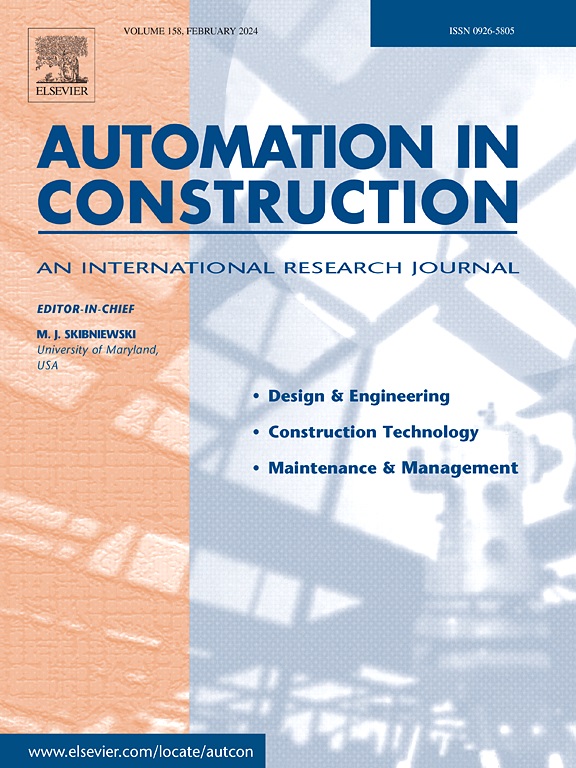利用遥感和深度学习技术快速描述灾后基础设施损坏特征:分层方法
IF 9.6
1区 工程技术
Q1 CONSTRUCTION & BUILDING TECHNOLOGY
引用次数: 0
摘要
关键基础设施对互联互通和经济增长至关重要,但面临人为破坏、气候变化和自然灾害等系统性威胁。快速、多尺度的损害评估是必不可少的,但集成、自动化的方法仍然不发达。本文提出了一种多尺度分层方法,通过展示如何使用数字技术实现自动损伤表征来解决这一差距。然后,通过乌克兰的一个案例研究应用并验证了该方法,该案例研究涉及17座被有针对性的人为干预破坏的桥梁。该技术从区域到组件尺度进行部署,使用Sentinel-1 SAR图像、众包数据和深度学习的高分辨率图像进行综合评估,从而实现自动损伤检测和表征。在分层的多尺度方法中,利用干涉相干差分和图像的语义分割来提高不同尺度下损伤表征的可靠性。这种综合方法可以自动化和加速决策,促进更有效的恢复和适应工作,并最终增强基础设施的弹性。本文章由计算机程序翻译,如有差异,请以英文原文为准。

Rapid post-disaster infrastructure damage characterisation using remote sensing and deep learning technologies: A tiered approach
Critical infrastructure is vital for connectivity and economic growth but faces systemic threats from human-induced damage, climate change and natural disasters. Rapid, multi-scale damage assessments are essential, yet integrated, automated methodologies remain underdeveloped. This paper presents a multi-scale tiered approach, which addresses this gap, by demonstrating how automated damage characterisation can be achieved using digital technologies. The methodology is then applied and validated through a case study in Ukraine involving 17 bridges damaged by targeted human interventions. Technology is deployed across regional to component scales, integrating assessments using Sentinel-1 SAR images, crowdsourced data, and high-resolution images for deep learning to enable automatic damage detection and characterisation. The interferometric coherence difference and semantic segmentation of images are utilised in a tiered multi-scale approach to enhance the reliability of damage characterisation at various scales. This integrated methodology automates and accelerates decision-making, facilitating more efficient restoration and adaptation efforts and ultimately enhancing infrastructure resilience.
求助全文
通过发布文献求助,成功后即可免费获取论文全文。
去求助
来源期刊

Automation in Construction
工程技术-工程:土木
CiteScore
19.20
自引率
16.50%
发文量
563
审稿时长
8.5 months
期刊介绍:
Automation in Construction is an international journal that focuses on publishing original research papers related to the use of Information Technologies in various aspects of the construction industry. The journal covers topics such as design, engineering, construction technologies, and the maintenance and management of constructed facilities.
The scope of Automation in Construction is extensive and covers all stages of the construction life cycle. This includes initial planning and design, construction of the facility, operation and maintenance, as well as the eventual dismantling and recycling of buildings and engineering structures.
 求助内容:
求助内容: 应助结果提醒方式:
应助结果提醒方式:


